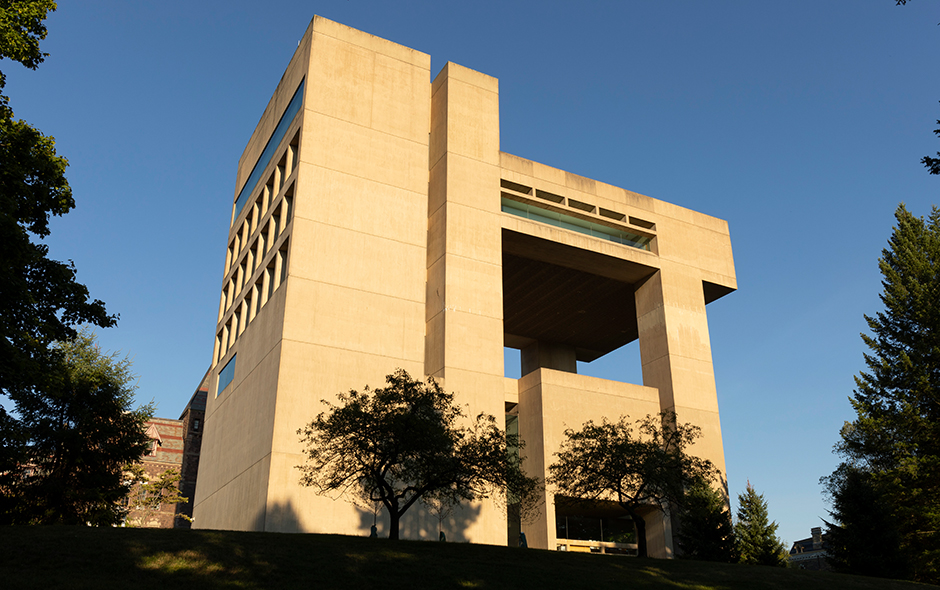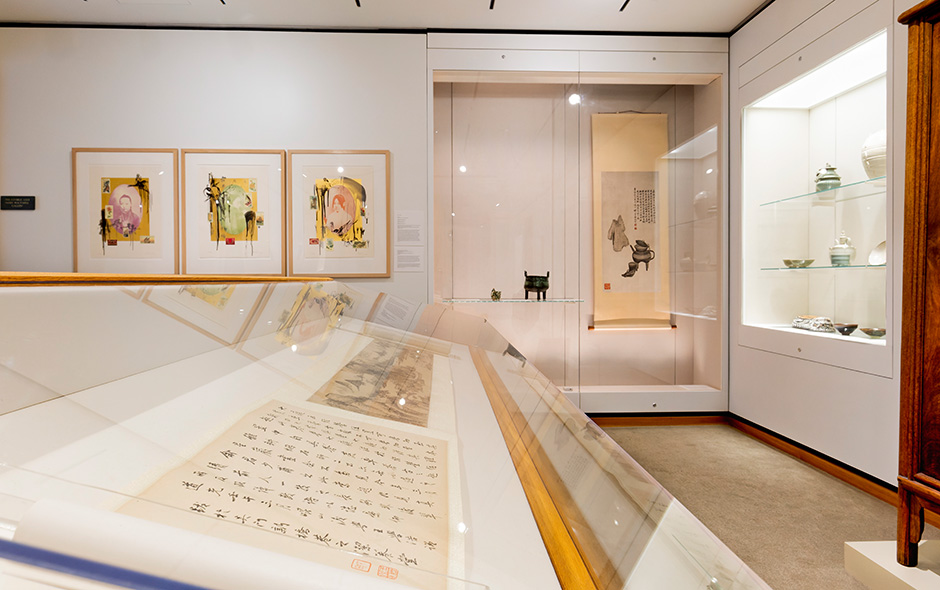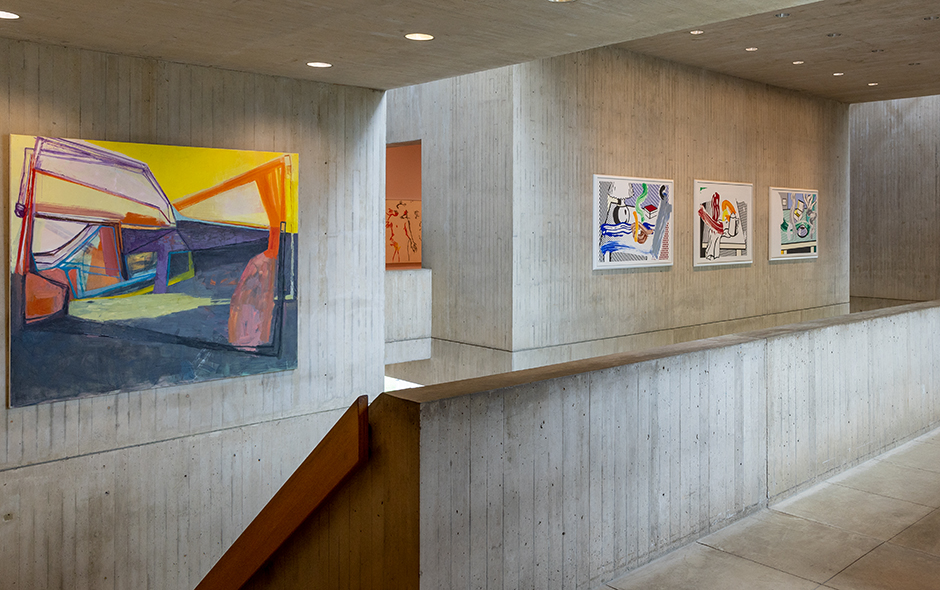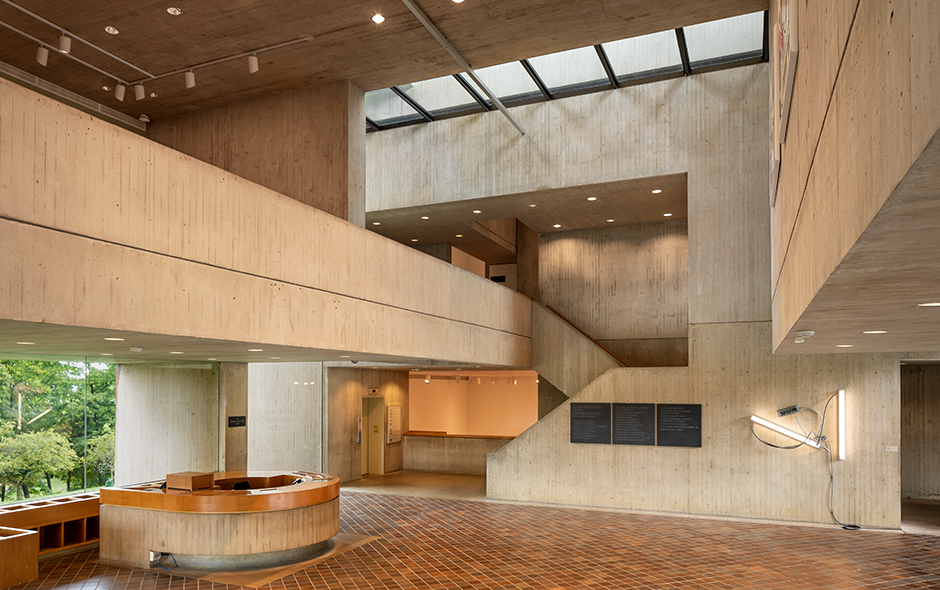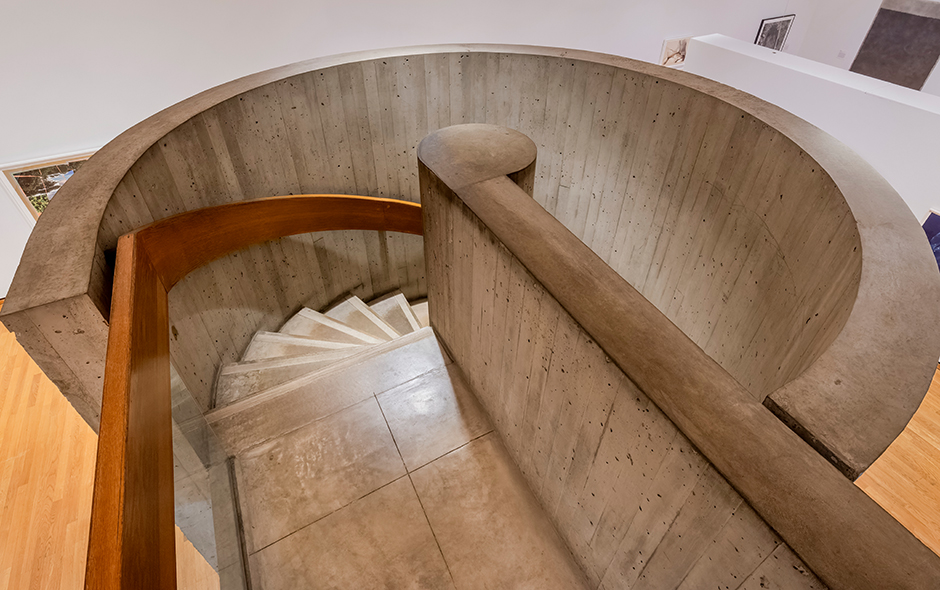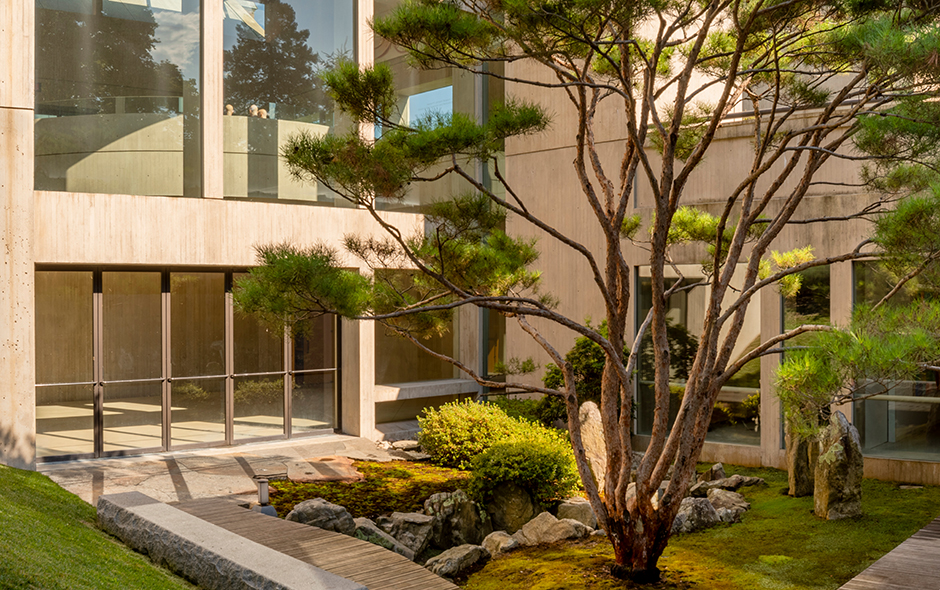
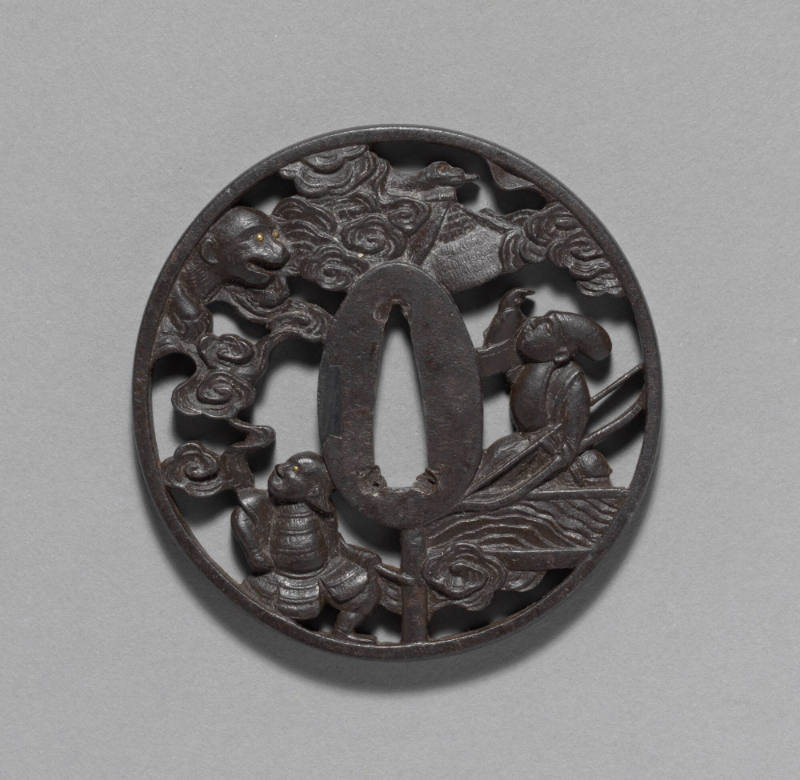
Object Details
Culture
Japan
Date
Edo period, 18th century
Medium
Iron
Dimensions
Diameter: 3 1/4 inches (8.3 cm)
Credit Line
Memorial gift from the Estate of Charles W. Hay, Class of 1925
Object
Number
73.005.019
BRIEF DESCRIPTIONThis is a sword guard from a samurai sword.WHERE WAS IT MADE?This item was made in (…)
BRIEF DESCRIPTIONThis is a sword guard from a samurai sword.WHERE WAS IT MADE?This item was made in Japan during the Edo period (1615-1868).HOW WAS IT MADE?This tsuba was handcrafted from iron.HOW WAS IT USED?The tsuba, or sword guard, lies between the hilt and the blade of a samurai sword. The tsbua served to prevent the hand from sliding down the hilt and onto the blade during combat. It consists of an obverse (front) and reverse side. The obverse side is the one that would face the opponent, while the reverse side would come in contact with the hand of the user. For this reason, traditionally tsuba were kept smooth on the reverse side.WHY DOES IT LOOK LIKE THIS?During the peaceful Edo period, sword fittings were seldom created for swords that were to be used in battle. Instead, these fittings, such as the tsuba, became a medium for artistic work, appreciated for their exquisite workmanship, variety of designs, and refined beauty. Whereas until around the 1650s, only a small number of motifs were typically used to decorate the sword fittings, in the following years of the Edo period the artists who made these fittings took inspiration from images in books, characters in folktales, and other popular cultural and natural motifs. Swords and their fittings served as status items for samurai. A sword owner would select motifs that expressed his tastes, values and interests. The scene depicted on this tsuba shows the archer and poet Yorimasa (on the right of the tsuba) who achieved fame by slaying the Nuye. The Nuye (on the left of the tsuba) was a composite beast with the head of a monkey, the claws of a tiger, the back of a badger, a serpent’s tail with a head at the end of it, and the calling sound of a bird of this name. According to legend, in 1153 the Emperor Konoye fell ill around the same time that strange cries were heard on the roof of the palace each night. The animal emitting the sounds would disappear in the daytime, but one night, after locating it by listening to its cries, Yorimasa shot it down with his bow and arrow. After it was killed, the Emperor recovered from his illness.Notice the shape of the central hole of the tsuba; it permitted the blade of the sword to pass through.



